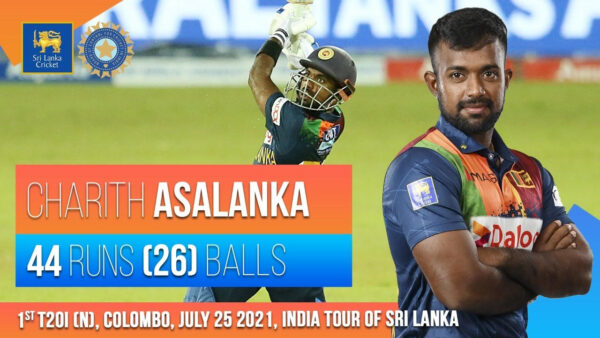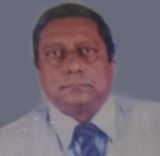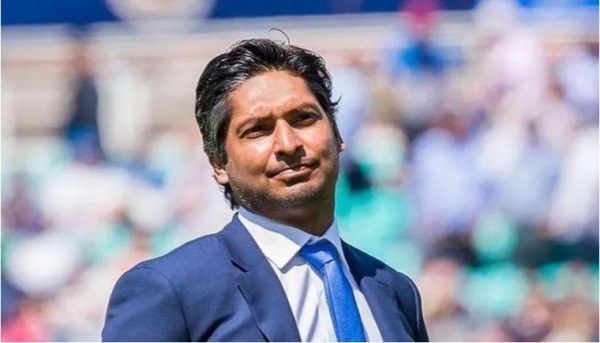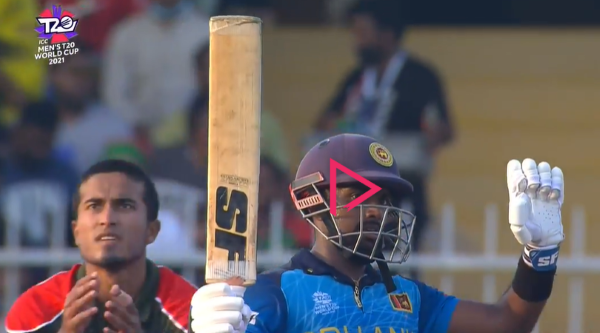Sanga confers Asalanka as his successor – By Sunil Thenabadu (Sports editor – eLanka)

 After the heroics of new find Charith Asalanka lately at the ICC T 20 WC and previously in the recently concluded one day internationals when the selectors persisted with him after a number of failures in the tour of England, when he kept the trust conferred on him by the selectors with a flurry of half centuries.
After the heroics of new find Charith Asalanka lately at the ICC T 20 WC and previously in the recently concluded one day internationals when the selectors persisted with him after a number of failures in the tour of England, when he kept the trust conferred on him by the selectors with a flurry of half centuries.
It is learnt that Sri Lanka with the retirement of left-handed number three batsman Asanka Gurusinghe had to stay for nearly three years to find his replacement Kumar Sangakkara in year 2000 as his successor. Kumar reigned for one and half decades when he contributed immensely towards Sri Lanka’s success.It was during his tenure that Sri Lanka had the distinction of been runners up in two ICC World Cups and winners in the ICC T 20 WC in year 2015.Of course it need to be emphasised that Kumar Sangakkara and Mahela Jayawardena names are etched in gold in record books for the highest partnership for any wicket 624 runs in the annals of test cricket which stands unbroken since year 2006 which is perhaps unlikely to be broken.The legend himself confirms that Charith Asalanka is his successor for various aptitudes which the legend had clearly possesses.

The excerpts extracted from a communication our journalists have had with legendary Kumar Sangakkara when the ICC T20 tournament in Dubai,AbuDhabi and Sharjah was in progress. Quoted below are the words Kumar Sangakkara himself asserted to our journalists from Colombo..

“I think Charith Asalanka has done extremely well. He looks like the caliber of player who will have a long career, score a lot of runs and win a lot of games for Sri Lanka.“His ability to deal with both good spin and good pace is terrific. He seems to have a fearlessness approach, which is good to see. When the side was in transition, there were various things that needed to be set in place. The things that will come into any player’s mind is a little bit of fear. Fear to fail; because you might feel the fear to take a risk as you could be dropped. The ability to take on the challenge puts reverses pressure on the opposition. Charith seems to have come to terms with all of that. He’s got poise. He’s got the game. From here on, it’s about getting his mental skills together; his game organization and adjusting from surface to surface, country to country, opposition to opposition. There’s a huge amount there already visible to say that he’ll be an excellent, excellent player,” Sangakkara added. The above comments augurs well for Sri Lankan cricket and for Charith Asalanka too.He further added:“Overall it’s been such an encouraging performance. Going in to this tournament everyone knew it was going to be a daunting task. There were questions in everyone’s mind, and rightly so, as to will this be the right team? Are these players capable of competing at the international level in such high-pressure tournaments? It’s been such a heartening sight to see the way this team has gone about it. They’ve looked fearless. Unfortunately, T20 is such a volatile format that a few deliveries, a run out can really cost you the game because there’s very little time for you to come back into a game when those mistakes occur.” Kumar Sangakkara further emphasised “not just Charith Asalanka but the emergence of a lot of young players augurs well for the game in the country. “The journey is just starting. All of you have spoken about Charith a lot. But if you take the whole unit in one, Hasaranga today is the number one T20 bowler in the world at such a young age. You see the beginning of a side if continuously and consistently developed; they have the makings of a side that will be a significant force, especially in white ball cricket.” He further added that: “More than half of the team that came to UAE had played less than a handful of T-20 Internationals but they tested some of the strong forces like South Africa. The game against Proteas was decided in the penultimate delivery with Sri Lanka going down fighting. “Unfortunately, against South Africa, you had that one over against Miller. They were few options. One is to go fifth leg stump ball at the heel or go wider outside the off stump to Miller so that you are away from his arc. Sometimes the execution just doesn’t work. And that was a game that was really within our grasp to win. Then against England, you know about 38 runs needed in 20 balls, England were a side that looked in absolute control against every side that they played except us. England were completely under pressure and in a very desperate situation. In those games you see that we are capable of getting into situations where we can win games against the best opposition.” He further quipped “I’m very reluctant to pinpoint areas like that because, you know, when you’re watching a game from the outside; you have the benefit of having a wider perspective. When you’re in the game and when you’re young and when you don’t have the same experience, sometimes things can get a little confusing. Not just confusing but it can get a little intense. Dasun has handled himself really impressively with this young side. There would have been a lot of pressure on him in terms of South Africa. I think the team had the plans right but unfortunately couldn’t execute in that last over. Perhaps in the England game Dasun not bowling himself in the 19th over maybe.” It needs to be confirmed that Sangakkara was part of the Cricket Advisory Committee headed by former great Aravinda de Silva that persuaded ex captain Mahela Jayawardene to join the team in an advisory capacity during the qualifying round. “Mahela being there had a huge impact on getting those tactics and strategy refined, fine-tuned and game ready. Adding to the experience of the coaching staff Mahela would have brought in an immense wealth of knowledge in terms of working with the analytics team, working with the players individually and getting those plans all set.” With the white ball team constantly underperforming, early this year, the new selection panel adopted an aggressive youth policy shutting the door on six seniors. With a new bunch of players coming in there seems to be new energy in the side. “I think the change of culture has to come a lot from within the team as well from the players themselves. I think the players have to take some time to really think about what they’re doing and how they’re doing it and really get together as a leadership group. If you want to set a culture, it has to have the players who buy into it. The coach or whoever else can come and demand things from the team. But if the team doesn’t buy into it, it’s very difficult to change the status quo. Sometimes it looks from the outside that maybe there isn’t the same passion, but I’m very reluctant to say that because I have been inside dressing rooms where we’ve had terrible losses and a few bad tournaments. But I know that every player has a burning passion to play the game. If you have a culture where you have to look over your shoulder and wonder whether you are going to get into the next team. What’s going to happen if I don’t score runs. If that continuous doubt is there in your mind it is very difficult to break out of that especially if you have a team with a lot of youngsters. So this new culture is giving them more certainty and more consistency. Telling them that we value them as players and individuals and this is the brand of cricket we want to see. This is the kind of excellence we want to have in the decision making process and in the way we play. The players seem to have really bought into that and really set that culture again where you see there is this positive energy on the field, always trying to fight always trying to win. It’s good to see.” When the national selection panel launched their aggressive youth policy, the backbone of their batting was going to be Danushka Gunathilaka, Kusal Mendis (vice-captain) and Niroshan Dickwella. But their suspension meant that it was back to square one. The trio are expected to return to domestic cricket shortly with their international suspension ending in June next year. What does Sangakkara expect from them when they return to a question posed was answered : “Perhaps, a little bit of common sense would be good. Three extremely talented players and what a loss it has been for Sri Lanka cricket in terms of not having their services available. But at the same time, a strong message has been sent by SLC. Their commitment to the team, discipline and expectations as cricketers is important. It’s non-negotiable. They have been handed significant bans and fines. I just hope that they learn from this and come back stronger. I am sure everyone will welcome them back and also hope that they will start thinking better not just on the field, but off the field as well.” |







